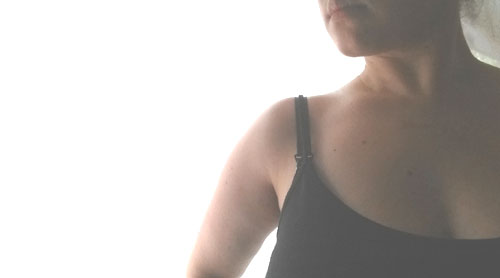I first found a lump in my breast when I was around 16. Skipping to the end of the story, it’s all fine now as it turned out to be a benign fibroadenoma, but I still remember the scary hospital trips, specialist appointments, scans and biopsies before I was given the all-clear the first time. And then after giving birth last year the lump grew. And the breast specialist recommended full excision. This eventually resulted in a partial mastectomy (lumpectomy) to remove it earlier this year because even if there was the remotest chance there was a problem, the lump had to go.
Having just had a baby, the stakes felt much higher than back when I was 16. Sitting in my hospital gown waiting for surgery, signing consent forms, trying to breastfeed Miss E after having pumped as much milk as possible the previous day, the husband trying to calm me down, and the surgeon drawing on my skin to indicate the lump to be removed, it all felt surreal. I don’t think I really breathed easy until the final specialist appointment after surgery when she advised the lump was fully removed and the lab results showed it was definitely benign.
Despite all the stress, it’s so much better to find answers than to let a lump go unchecked. Ignoring a lump won’t make it go away. My story has had a good outcome, but this month I am giving thought to those diagnosed, fighting and surviving breast cancer, and their families and friends.
October is Breast Cancer Awareness Month and I believe it’s so important to know how to perform self-checks and to do them regularly. We need to be aware of what our bodies normally feel like, and if you feel a lump you need to follow up with a GP appointment as soon as possible.

How to perform a self check
Eight women are diagnosed with breast cancer in NZ every day and most have no close family history of the disease. Approximately half of all breast cancers are found because women noticed a change and showed their doctor which means knowing how to perform a self check and knowing what to look for are incredibly important. You should be checking your breasts monthly starting from your early twenties.
Here are some tips to help you perform a self check:
- TOUCH – Feel both breasts for any thickening of the skin or lumps right up toward the armpits. Feel for any unusual pain,
- LOOK – Look in the mirror for any visible changes to the nipples, skin or breast shape. This can include puckering, dents, nipple discharge or inversion, rashes, dimples, or skin that has an orange peel-like appearance.
- CHECK – Any changes you notice should be followed up with your doctor.
Take part in Breast Cancer Awareness Month
Here are some ways you can take action:
- Volunteer to collect donations and spread awareness for the Pink Ribbon Street Appeal on October 14 or October 15.
- Get some exercise while raising awareness by participating in a Pink Star Walk in Auckland (October 8), Christchurch (October 29) or Wellington (November 12).
- Buy Pink Ribbon products.
For more information and for more ways you can participate, visit:
Image / NZ Real Health

